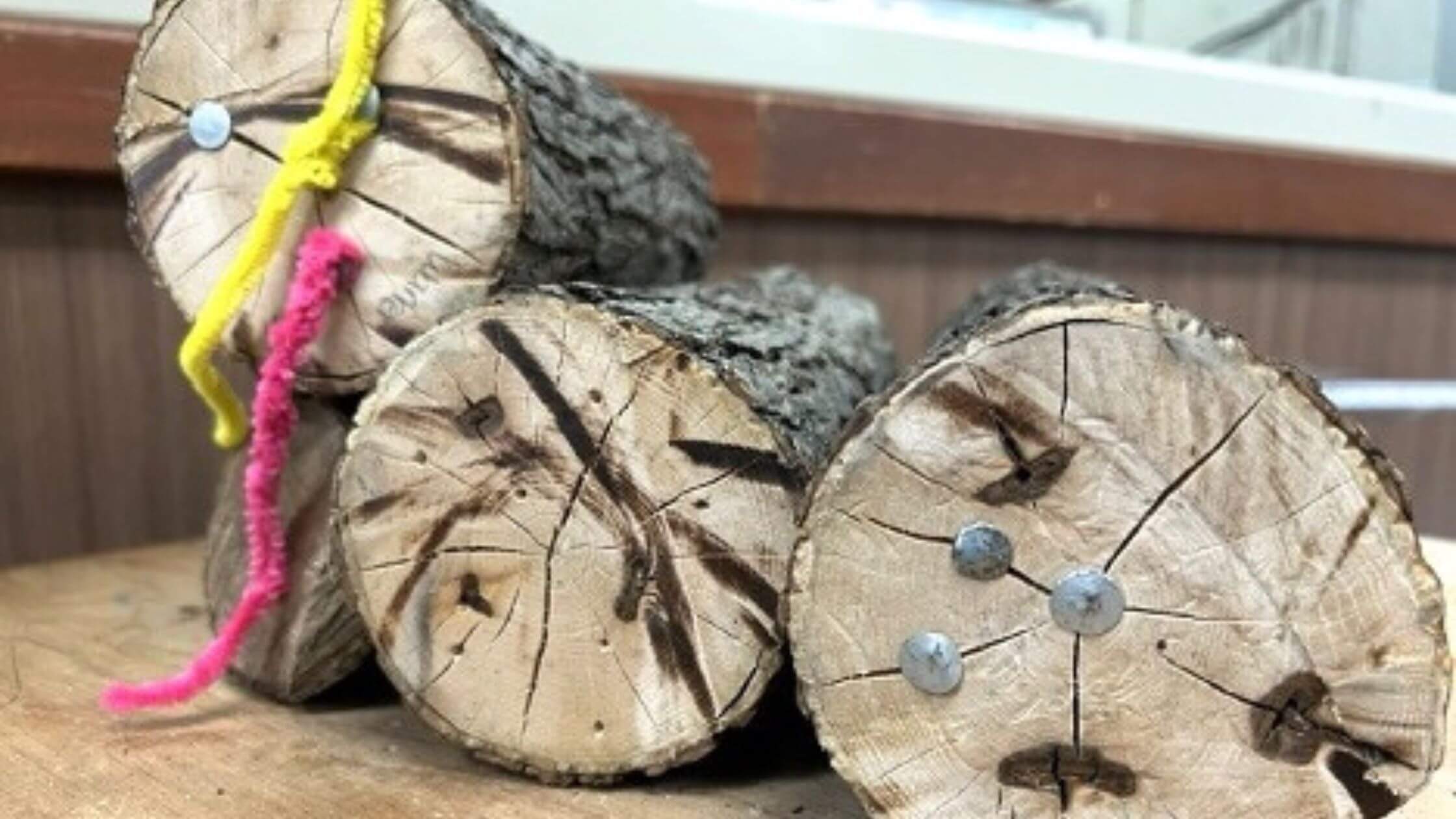Mess is often a natural part of play, especially when working with loose parts and natural materials. While it is important to consider the potential mess that may arise, it is equally important to recognize the value of messy play in children’s development and creativity. Children learn through hands-on experiences. The messier, the better. In fact, Maria Montessori (1964) believed that children absorb their environments and you only have to look at their clothing at the end of a day of play to realize that she was absolutely correct. Embrace the mess as part of the learning process, creativity and offer opportunities for children to engage in messy play while maintaining a manageable and organized MakerSpace.
MakerSpaces are messy so here are some considerations when it comes to managing the mess with natural loose parts. By implementing these strategies, you can strike a balance between allowing for the benefits of messy play with natural loose parts while also managing the cleanup process effectively.
Designate an creativity area where a mess is OK. Select an area where mess is expected and anticipated. This should be a designated area that is perhaps a little off the beaten path or in the back corner of the classroom. Consider using a large mat, tarp, or picnic tablecloth (with felt backing) to contain the mess and make cleanup easier.
Set expectations of the space. Establish clear expectations and ground rules with the children regarding the use and handling of the natural loose parts. Model responsibility and emphasize the importance of picking up and returning materials to their appropriate places. Encourage children to be mindful of the messes they have created and to take ownership of keeping a tidy MakerSpace.
Provide tools for cleaning up. Providing cleaning tools such as small dustpans, brooms, brushes, and nearby trash containers helps everyone become guardians of the space.
Use appropriate containers. Intentionally select storage containers being sure children can easily manage and transport them. Storage containers with handles helps ease the cleanup process. Clear transparent or low sided storage containers help children return contents to the correct place. Appropriate storage containers also keeps materials from scattering too far making cleanup more manageable. Be sure shelves are easily accessible for uncomplicated retrieval and return of loose parts.
Set cleanup routines. Establish consistent cleanup procedures and encourage children to help with tidying up by providing guidance and support as needed. Make the cleanup a collaborative effort by involving children in sorting and organizing the loose parts back into their designated containers. This fosters a sense of responsibility and promotes their understanding of the importance of maintaining a clean and organized environment.
An Invitation For Story Making And Creativity With MakerSpaces
There’s something powerful about creating with nature. Natural objects have a special weight to them when they come with a story–not just any story, but one that comes from the children’s hearts and imaginations. Children’s stories are not just a string of words, but ideas, notions, and hypotheses. But, there is something more that you will find if you listen intently while they spin their nature stories: Wishes and dreams. Children live in the present, but they are capable of much more if we give them the space, time, and materials such as the simple stick.
Sticks are fascinating to young children—and so are all of nature’s gifts. The creativity potential of these gifts is limitless. And, every moment is open to possibilities. The day-to-day lives of childhood might seem mundane to an adult but to a child, life is filled with adventure, creativity and excitement. Create a Nature’s Makerspace in your classroom that celebrates natural materials, exploration, and creativity. A Nature’s Makerspace is fun, engaging, and paramount to preserving the magic of childhood.
Sidebar #1
Safety Tips. Although there are risks when playing with sticks, the benefits definitely outweigh the negatives. Research studies have shown that engaging with natural materials have a positive effect on young children (i.e., improved wellbeing, focus, empathy, and brain development). Therefore, it is important to bring the outside in (Duncan & Martin, 2018) but it is also necessary to think about children’s safety. Be sure there are no pointed, jagged, or sharp pieces. Begin with short and chunky pieces and gradually increase in size as children demonstrate safe and appropriate use of the sticks.
Sidebar #2
Stick Etiquette. There’s been much conversation about risky play with young children and experts such as Keeler (2020) and Sandseter (2009) agree that all children need to have opportunities to experience risky play. Examples of risky play include playing at high heights and speeds as well as rough-and-tumble play. Playing with sticks could be classified as risky and dangerous. With simple agreed-upon rules, however, sticks can become an integral part of classroom experiences.
- Sticks are not meant to hurt ourselves, friends, families, and/or animals.
- Sticks with sharp edges should be left outside.
- Sticks shorter than your arm are safe to use for play if they have no sharp edges.
- Sticks for playing should be found on the ground.
Sidebar #3
Quote
Nature teaches us how the world works.
Imagination teaches us how to dream.
Play teaches us how to make our dreams real.
-Sarah Olmsted
Read Unlocking Creativity: Discover The Power Of Sticks P1 here!
